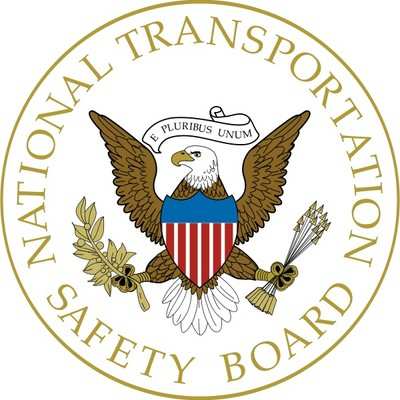Pilot Reported To The Salt Lake City Air Route Traffic Control Center Controller The Loss Of The Autopilot And Declared An Emergency
Location: Recluse, WY Accident Number: WPR24FA257
Date & Time: July 26, 2024, 13:04 Local Registration: N357HE
Aircraft: Pilatus Aircraft Ltd PC12/47E Injuries: 7 Fatal
Flight Conducted Under: Part 91: General aviation - Personal

On July 26, 2024, about 1304 mountain daylight time, a Pilatus Aircraft LTD, PC-12/47E airplane, N357HE, was destroyed when it was involved in an accident near Recluse, Wyoming. The pilot and six passengers were fatally injured. The airplane was operated as a Title 14 Code of Federal Regulations Part 91 personal flight.
A review of ADS-B data provided by the Federal Aviation Administration (FAA) showed that the airplane departed Nebraska City Municipal Airport, Nebraska City, Nebraska, about 1200, and flew on a northwest track with an intended destination of Billings Logan International Airport (BIL), Billings, Montana. The data showed that the airplane climbed to a maximum cruise altitude of about 26,000 ft mean sea level (msl).
About 1302, the airplane maneuvered to the right of course and climbed to about 27,550 ft msl and performed a 270° right turn. In the first 180° of the turn, the airplane descended to an altitude of about 25,250 ft msl, however, it climbed to about 27,025 ft msl in in the last 90° of the turn. Shortly after, the data showed the airplane made a slight left turn before it began a descending 180° right turn. The last data point showed the airplane on a southerly heading, at an altitude of about 21,900 ft msl, and with a groundspeed of 256 knots. During the last portion of the flight, the pilot reported to the Salt Lake City Air Route Traffic Control Center controller the loss of the autopilot and declared an emergency. The controller queried the pilot on where he would like to land, however, received no initial response. The pilot then responded that he was trying to get control of the airplane to which the controller advised the pilot to let them know if he required additional
assistance. The controller then advised the pilot of the minimum instrument flight rules (IFR) altitude and current altimeter with no further response from the pilot.
Following a loss of radio and radar contact, the FAA issued an Alert Notice (ALNOT) for the airplane. Subsequently, the airplane was located by local law enforcement personnel in remote terrain about 12 miles northeast of Recluse, Wyoming. One witness located near the accident site heard a “loud whining noise” that diminished and then increased followed shortly thereafter by smoke emanating from the area of the accident site. Another witness observed the airplane overhead in a “barrel roll” maneuver and heard the airplane’s engine “roaring loud” until they heard the airplane impact terrain. The witness stated that they saw the smoke in the area shortly after. Examination of the accident site revealed that the airplane impacted terrain on a magnetic heading of about 099°. The main wreckage was located at an elevation of about 4,030 ft msl, and on a slope of about 20°. The initial impact point was a ground disturbance about 10 ft in length, 41 ft in
width, and 6 ft in depth, where a majority of the airplane wreckage was embedded in the ground.
Surrounding the ground disturbance was a large area of burnt vegetation. Small fragments of the airplane were scattered throughout an approximate 300 ft radius from the main wreckage. A post impact fire ensued that encompassed an area of about 40 acres, primarily to the west of the main wreckage.
Two sections of the left-wing and various fragments of the airplane were located along a debris path that extended about 0.82 miles from the main wreckage on a heading of about 300° magnetic. All major components of the airplane were contained within the accident site and debris path.
The airplane wreckage was recovered to a secure facility for further examination.
 Classic Aero-TV: VerdeGo Debuts VH-3 Hybrid-Electric Powerplant
Classic Aero-TV: VerdeGo Debuts VH-3 Hybrid-Electric Powerplant NTSB Prelim: Grumman American Avn. Corp. AA-5B
NTSB Prelim: Grumman American Avn. Corp. AA-5B ANN's Daily Aero-Linx (12.02.25)
ANN's Daily Aero-Linx (12.02.25) Aero-News: Quote of the Day (12.02.25)
Aero-News: Quote of the Day (12.02.25) Aero-News: Quote of the Day (12.03.25)
Aero-News: Quote of the Day (12.03.25)



